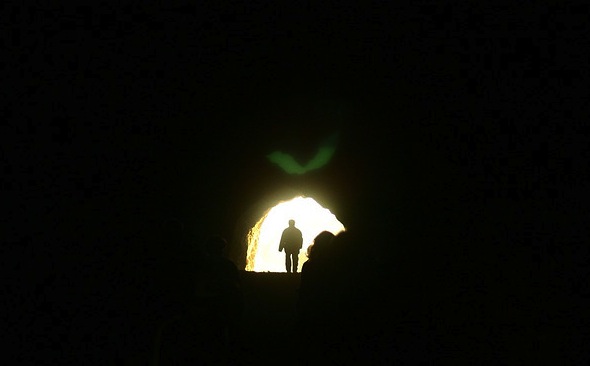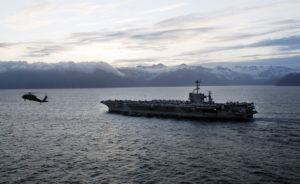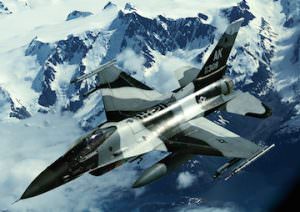Incinerating Iraq: How America’s Policies Sealed the Country’s Fate
The disintegration of Iraq is the result of U.S. policies that, since 2003, have been strikingly devoid of coherence or any real comprehension when it comes to the forces at play in the country or the region. 1
2
3
1
2
3
That very month, Amnesty International released a report that highlighted what it called “a grim cycle of human rights abuses” in Iraq. When I was in Baghdad, it was common to hear Maliki referred to in many areas as “worse than Saddam [Hussein].”
In late 2012, the young among the politically disenfranchised Sunni population began to organize peaceful Arab Spring-style rallies against the government. These were met with brute force and more than a dozen demonstrators were killed by government security forces. Videos of this went viral on the Web stirring the already boiling tempers of youths desperate to take the fight for their rights to Baghdad.
“We demand an end to checkpoints surrounding Fallujah. We demand they allow in the press [to cover the situation]. We demand they end their unlawful home raids and detentions. We demand an end to federalism and gangsters and secret prisons.” This was what Sheikh Khaled Hamoud Al-Jumaili, a leader of the demonstrations, told me just before I went on stage that day. As we spoke, he clutched a photograph of one of his nephews killed by Maliki’s forces while demonstrating in the nearby city of Ramadi. “Losing our history and dividing Iraqis is wrong, but that and kidnapping and conspiracies and displacing people is what Maliki is doing.”
As I wrote at the time, the sheikh went on to assure me that many people in Anbar Province had stopped demanding changes in the Maliki government because they had lost hope. After years of waiting, no such demands were ever met. “Now, we demand a change in the regime instead and a change in the constitution. We will not stop these demonstrations. This one we have labeled ‘last chance Friday’ because it is the government’s last chance to listen to us.”
“What comes next,” I asked him, “if they don’t listen to you?”
“Maybe armed struggle comes next,” he replied without a pause.
Maliki’s response to the Fallujah protests would, in fact, insure that the sheikh’s prediction became the region’s future.
The adrenaline-pumping energy on stage and in the crowd that day mixed electric anticipation and anxiety with fear. All of this energy had to go somewhere. Even then, local religious and tribal leaders were already lagging behind their supporters. Keeping a lid on the seething cauldron of Sunni feeling was always unlikely. When a tribal sheikh asked the crowd for a little more time for further “diplomacy” in Baghdad, the crowd erupted in angry shouts, rushed the stage, and began pelting the sheikhs with water bottles and rocks.
In pockets of that crowd, now a mob, the ominous black flags of ISIS were already waving vigorously alongside signs that read “Iraqis did not vote for an Iranian dictatorship.” Enraged shouts of “We will now fight!” and “No more Maliki!” swept over us as we fled the stage, lest we be hit by those projectiles that caught the rage of the young, a rage desperate for a target, and open to recruitment into a movement that would take the fight to the Maliki regime.
Enter ISIS
Funded by Arabian Gulf petrodollars from Qatar and Saudi Arabia, among other places, and for a long while supported, at least implicitly, by the Obama administration, radical Islamist fighters in Syria opposing Bashar al-Assad have been expanding in strength, numbers, and lethality for the last three years. This winter, they and their branches in Iraq converged, first taking Fallujah, then moving on to the spring and summer debacles across Sunni Iraq and the establishment of a “caliphate” in the territories they control in both countries.
It was hardly news that ISIS, a group even the original al-Qaeda rejected, had a strong presence in Syria. Secretary of State John Kerry spoke of the situation defensively last fall in attempting to explain Washington’s increasingly controversial and confused policy on Syria, the rebels, and the regime of Bashar al-Assad they were trying to fell. He described the “bad guys” as radical fighters belonging to ISIS and al-Qaeda-affiliated groups, calling them the lesser part of the opposition in that country, a statement that even then was beyond inaccurate. He went on to describe those “bad guys” as having “proven themselves to be probably the best fighters… the most trained and aggressive on the ground.”
Of course, Kerry claimed that the U.S. was only supporting the “good guys,” another convenient fiction of the moment.
Fast forward to just a few weeks ago: in a meeting with Syrian opposition leader Ahmad al-Jarba, Kerry proposed arming and training supposedly well-vetted “moderate” Syrian rebels to help take the battle to ISIS in Syria but also in Iraq. “Obviously, in light of what has happened in Iraq,” he said, “we have even more to talk about in terms of the moderate opposition in Syria, which has the ability to be a very important player in pushing back against [ISIS’s] presence and to have them not just in Syria, but also in Iraq.”
The confusion of this policy remains stunning: Washington hopes to use “moderate” Syrian rebels, in practice almost impossible to separate from the extreme Islamists, “in pushing back against” those very Islamists, while striking against the Assad regime which is supporting — with air strikes, among other things — the Maliki government which Washington has been arming and supporting in Iraq. The U.S. has already invested more than $25 billion in support for Maliki — at least $17 billion of which was poured into the Iraqi military. Clearly that was money not well spent as that military promptly collapsed, surrendering a string of cities and towns, including Tal Afar and Mosul, when ISIS and other Sunni insurgents came knocking.
More aid and personnel are now on the way from Washington. The Obama administration already admits to sending at least an extra 750 Marines and Special Operations troops into Iraq, along with missile-armed drones and Apache helicopters. It is now pushing hard to sell Iraq another 4,000 Hellfire missiles. The Pentagon insists its troops in Baghdad are either guarding the huge U.S. embassy or serving in an “advisory” capacity to the Iraqis, but is also claiming that its forces need “flexibility” in order to carry out their missions. As a result, there are already plans for U.S. pilots to fly those Apache attack helicopters there.
Your support matters…Independent journalism is under threat and overshadowed by heavily funded mainstream media.
You can help level the playing field. Become a member.
Your tax-deductible contribution keeps us digging beneath the headlines to give you thought-provoking, investigative reporting and analysis that unearths what's really happening- without compromise.
Give today to support our courageous, independent journalists.





You need to be a supporter to comment.
There are currently no responses to this article.
Be the first to respond.